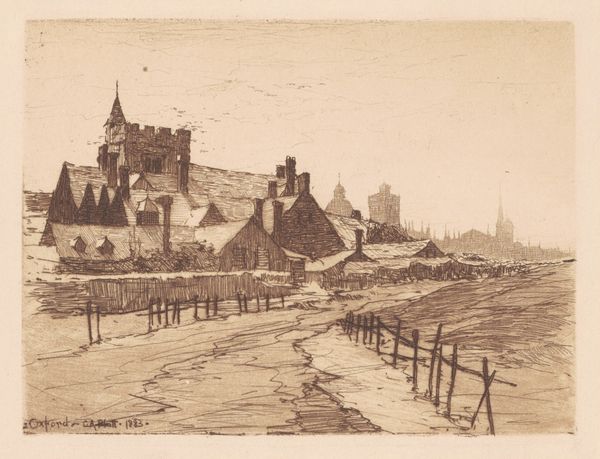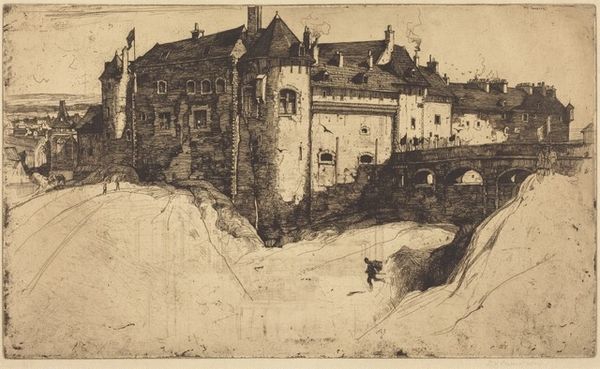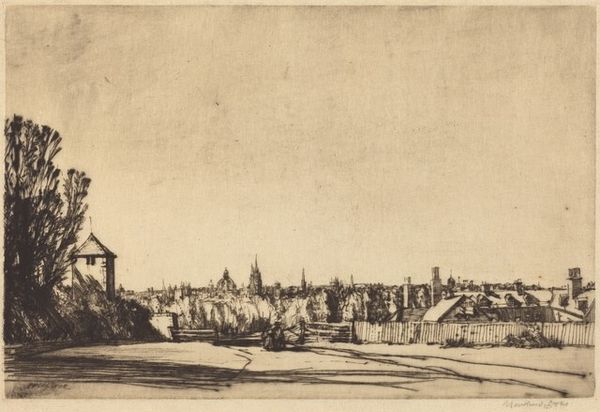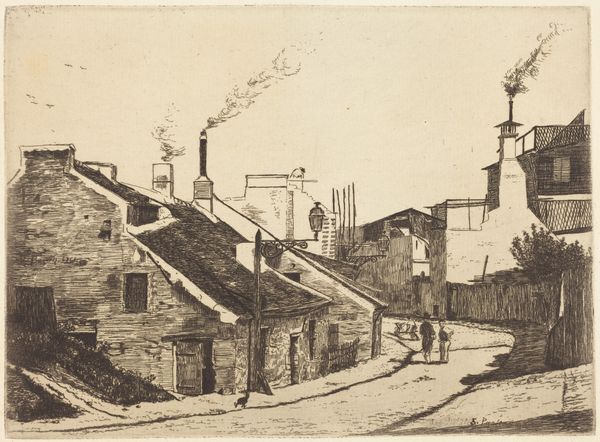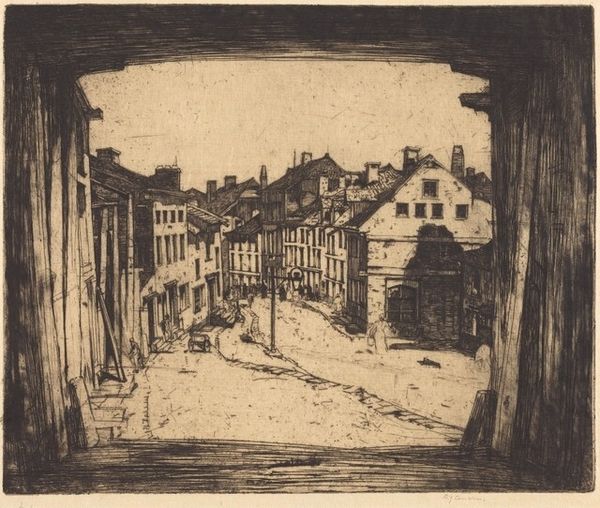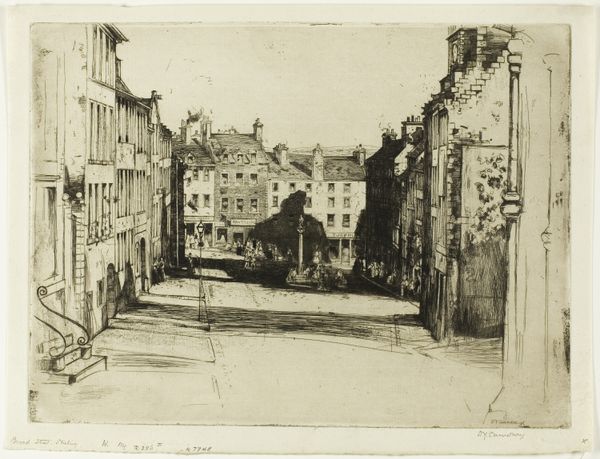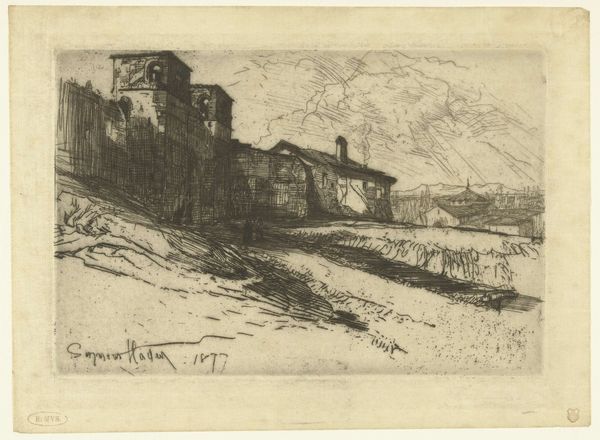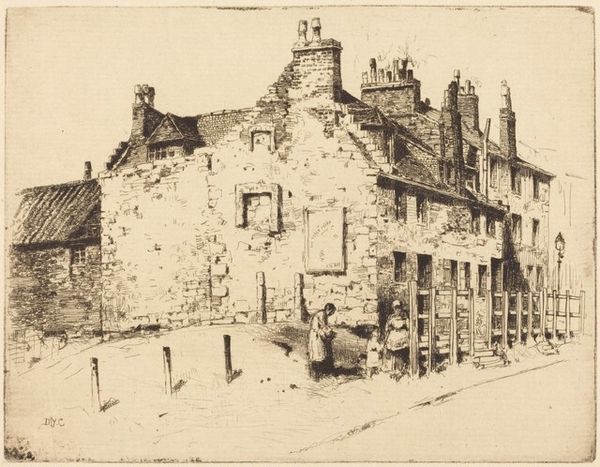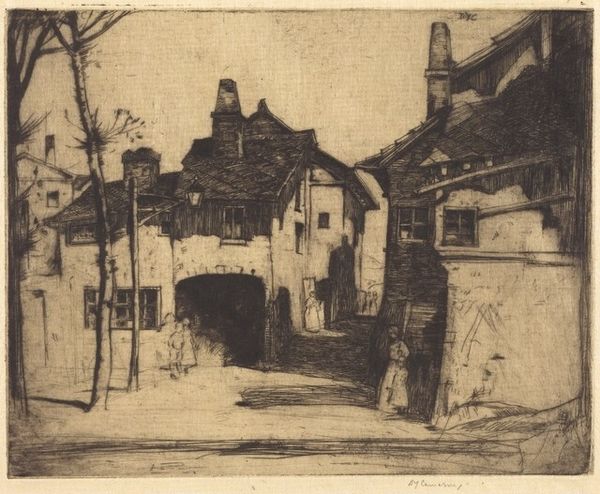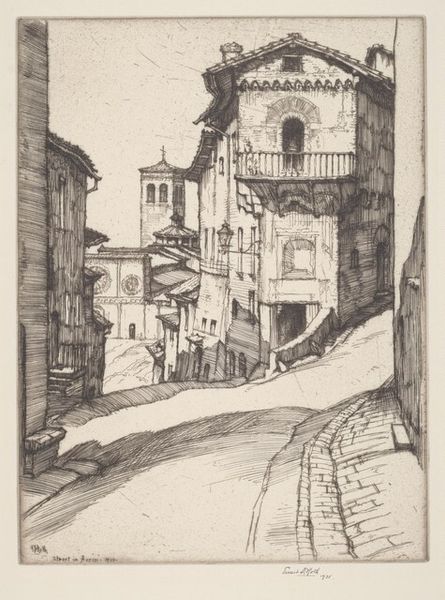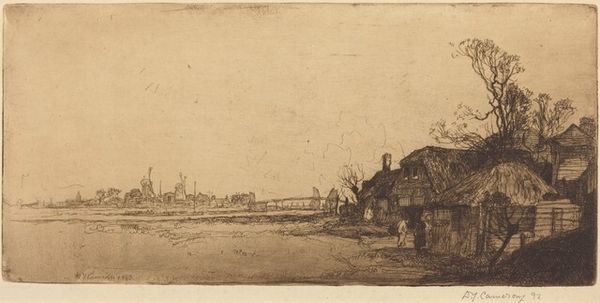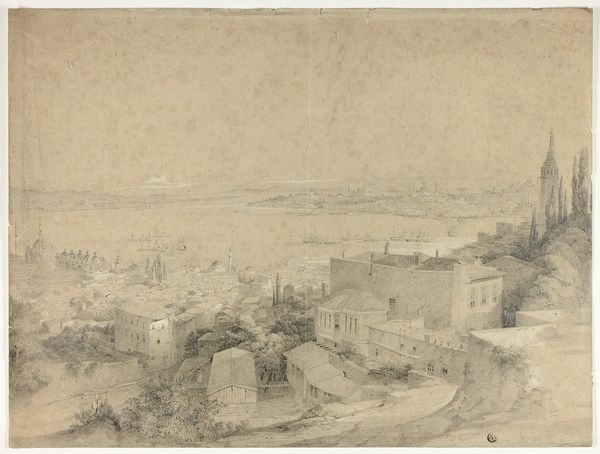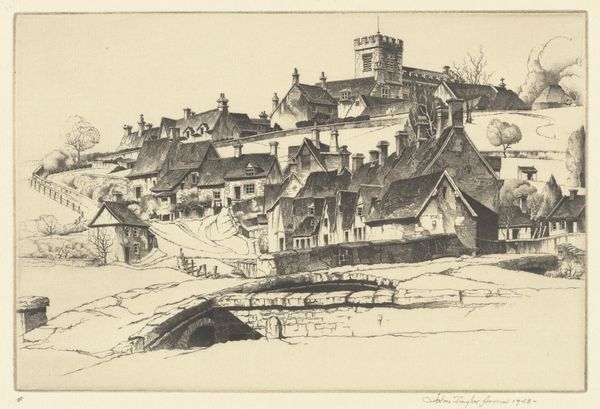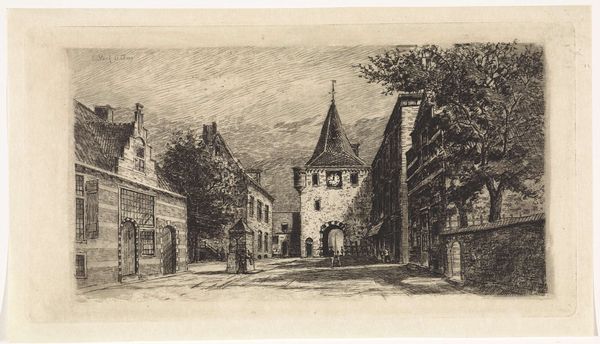
Copyright: National Gallery of Art: CC0 1.0
Curator: The overwhelming density of chimneys and roofs—it really strikes me as the subject here. Editor: Absolutely. This etching, "Stirling Town" by David Young Cameron, created in 1891, really is a study in architectural forms, using a single color to describe a variety of surface qualities. You get a strong sense of the artist’s mastery of the etching process. Curator: Indeed, let's consider the technique. The density achieved with lines of such varied widths, to convey that weathered stonework, really elevates etching beyond mere reproduction and transforms it into a compelling artistic statement. He doesn't just show us the architecture; he exposes the act of production. I imagine how long each of these tiny scores might have taken. Editor: That connects with the socio-political history, though, too, doesn't it? Etchings, prints, made art accessible, replicable. Suddenly you could engage with art from a position of access as opposed to wealth or prestige. That, to me, is as key to the piece as the ink he used. Curator: Good point, democratizing visual imagery. Still, even within a print, the differences in depth of the lines indicate different lengths of exposure to acid, which speaks to different stages of working the plate. Was he thinking of light, or depth of image when making this work? Editor: Well, from a social history angle, it allowed for a broader visual literacy. As for what Cameron intended, this view suggests a desire to highlight not just the monumentality of Stirling’s buildings, but also their relationship to the community and daily life. And that relationship is also political—power and presence. The placement of the cathedral, high above, keeps the eye moving up. Curator: The atmospheric perspective he's able to capture too--such a sharp difference in clarity of depth created by varying line quality and weight. What an incredible understanding of material capabilities. Editor: Thinking about it, this single image summarizes the changes sweeping through visual culture at the turn of the century—new access, new conversations about urban life and civic spaces. Curator: I agree. Looking at this now, I think the image’s worth lies as much in what it shows of Cameron's artistic journey as it does in the final result. Editor: Precisely—the confluence of technological innovation and evolving social dynamics is etched right there in the image itself.
Comments
No comments
Be the first to comment and join the conversation on the ultimate creative platform.
